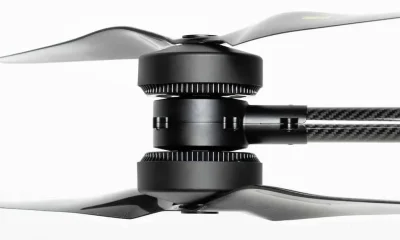- Guide
- Flight in High Winds
- How to Choose Your First Drone
- How to Fly a Drone for Beginners
- Insurance Guide
- Maximize Performance
- Maintenance Tips
- Optimize Flight Time
- Optimize Payload Capacity
- Part 107 & RPAS How to Guide
- Understanding Drone Terminology
- Understanding FAA Drone Regulations
- Safety Guidelines
- Surveying Guide
Top Guides
Drone Flight Time- Guide to Optimization
By
Jacob StonerTable Of Contents

Optimizing Your Drone’s Flight Time
Drones are incredible tools, but their flight time is only as good as their batteries. Optimizing battery choices and adopting proper care routines can make all the difference between a quick landing and a successful mission. Let’s break down how to improve drone flight time.
Understanding Your Drone’s Flight Time
Most consumer and professional drones rely on lithium polymer (LiPo) batteries. These batteries are lightweight and pack high energy density but require careful handling. Mismanagement can lead to reduced performance, overheating, or even safety hazards like fire.

Key Variables in Battery Performance
- Capacity (mAh):
- Think of capacity as your battery’s fuel tank. A 5,000mAh battery will typically offer more flight time than a 2,500mAh one.
- Pro Tip: Larger capacity is better, but ensure it fits your drone and doesn’t add excessive weight.
- Discharge Rate (C Rating):
- The “C rating” tells you how quickly a battery can release energy. A 20C battery is good for regular flights, while 50C is ideal for high-performance drones.
- Example: For racing drones, prioritize a higher C rating to handle sudden power bursts.
- Battery Health:
- Factors such as charge cycles, improper storage, and overcharging degrade battery performance. Regular monitoring is essential.
- Visual: Graph showing battery efficiency drop after 100, 200, and 300 charge cycles.
Best Practices for Battery Care
1. Charge Smartly
- Always use chargers designed for your battery type. Smart chargers with balancing features prevent overcharging and uneven cell voltages.
- Pro Tip: Stop charging when the voltage per cell reaches 4.2V to avoid stress on LiPo cells.
2. Store at Optimal Conditions
- Ideal storage: 40-60% charge in a temperature-controlled area (15°C to 25°C).
- Avoid prolonged storage at full charge, which causes swelling.
3. Protect from Temperature Extremes
- High temperatures lead to swelling and reduced lifespan. Freezing conditions cause voltage drops and power loss.
- Example: If operating in winter, pre-warm batteries using an insulated sleeve.
4. Inspect Regularly
- Check for swelling, punctures, or chemical leakage. Replace damaged batteries immediately.
- Visual: Annotated photo of a swollen LiPo battery with warnings.
Tips to Extend Flight Time
1. Upgrade Thoughtfully
- Higher capacity batteries can extend flight time but weigh more. Balance capacity and drone weight for efficiency.
- Example: A DJI Mini 3 Pro’s 2,453mAh battery offers up to 34 minutes, while its extended battery increases that to 47 minutes at the cost of added weight.
2. Lighten the Payload
- Remove unnecessary accessories or payloads. Every gram saved adds minutes to flight time.
3. Fly Smart
- Avoid rapid acceleration or sudden stops, which drain power. Use gentle controls and minimize hovering.
4. Optimize Propellers and Settings
- Well-balanced propellers and settings like low-speed mode can reduce power draw.

The Big Picture
Proper battery care is the key to maximizing performance, extending flight time, and enhancing drone safety. By understanding your batteries and applying these best practices, you’ll save money, fly longer, and keep your drone in top condition.
As the CEO of Flyeye.io, Jacob Stoner spearheads the company's operations with his extensive expertise in the drone industry. He is a licensed commercial drone operator in Canada, where he frequently conducts drone inspections. Jacob is a highly respected figure within his local drone community, where he indulges his passion for videography during his leisure time. Above all, Jacob's keen interest lies in the potential societal impact of drone technology advancements.











